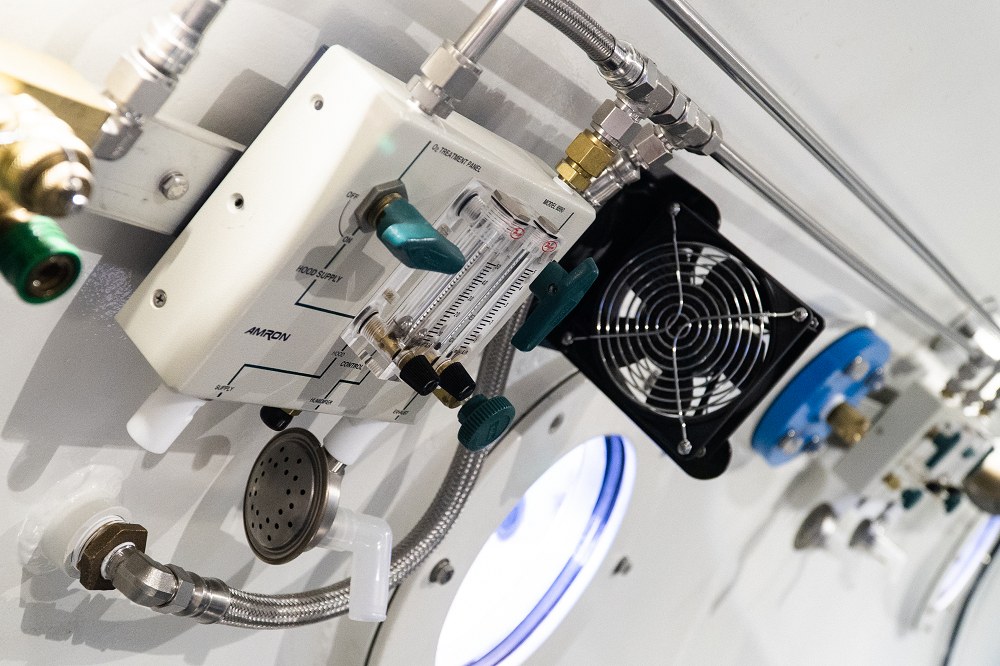Abstract: Problem wounds represent a significant and growing challenge to our healthcare system. The incidence and prevalence of these wounds are increasing in the population, resulting in growing utilization of healthcare resources and dollars expended. Venous leg...
Performance of the probe-to-bone test in a population suspected of having osteomyelitis of the foot in diabetes.
Abstract: We investigated the validity of probe-to-bone testing in the diagnosis of osteomyelitis in a selected subgroup of patients clinically suspected of having diabetic foot osteomyelitis. Between January 1, 2007, and December 31, 2008, inpatients and outpatients...
Control groups in hyperbaric trials.
Abstract: Sherlock, , , , , , , , (2012). Control groups in hyperbaric trials. Diving and hyperbaric medicine, 2012 Sep;42(3):183. https://www.ncbi.nlm.nih.gov/pubmed/22987465
[Adjuvant treatment of diabetic foot].
Abstract: A diabetic infected foot with erythema and fluctuation can suspect that the infection has passed the fascial compartmental, a condition that requires surgical drainage. Elective amputation may be considered for patients who have recurrent ulcers,...
Local treatment of chronic wounds: in patients with peripheral vascular disease, chronic venous insufficiency, and diabetes.
Abstract: A chronic wound is defined as an area where the skin is not intact that fails to heal within eight weeks. Such wounds usually develop on the lower limbs as a complication of diabetes, venous insufficiency, or inadequate arterial perfusion. Most of the...
Wound care: biofilm and its impact on the latest treatment modalities for ulcerations of the diabetic foot.
Abstract: Biofilm is an increasingly important topic of discussion in the care of the chronic diabetic foot wound. Treatment modalities have focused on biofilm reduction or eradication through debridement techniques, topical therapies, negative pressure therapy, and...
Diabetic vascular disease: characteristics of vascular disease unique to the diabetic patient.
Abstract: Diabetes is a cardiovascular disease affecting almost every arterial vascular bed with significant consequences. Vascular disease is one part of a triopathy of complications that singularly but most commonly in combination makes the diabetic patient uniquely...
[Examples of practice: clinical trials for medical devices and their application: wound care].
Abstract: According to definition, chronic wounds do not show any tendency for healing over months. From the socio-economic perspective they are of great importance due to their frequency, patient burden and costs for the health system. In wound care, medical devices...
Is HOT a Cool Treatment for Type 1 Diabetes?
The National Brain Injury Rescue and Rehabilitation Project was established as a preliminary study to test the safety and practicality of multi-center hyperbaric oxygen administration for the post-concussive symptoms of chronic mild traumatic brain injury as a precursor to a pivotal, independent, multi-center, controlled clinical trial. This report presents the results for 32 subjects who completed a preliminary trial of hyperbaric oxygen several years before the passage of the 21 st Century Cures Act. This study anticipated the Act and its reassessment of clinical research. Subjects received 40-82 one-hour treatments at 1.5 atmospheres absolute 100% oxygen. Outcome measures included repeated self-assessment measures and automated neurocognitive tests. The subjects demonstrated improvement in 21 of 25 neurocognitive test measures observed. The objective neurocognitive test components showed improvement in 13 of 17 measures. Earlier administration of hyperbaric oxygen post injury, younger age at the time of injury and hyperbaric oxygen administration, military status, and increased number of hyperbaric oxygen administrations were characteristics associated with improved outcomes. There were no adverse events. Hyperbaric oxygen was found to be safe, inexpensive and worthy of clinical application in the 21 st Century model of facile data collection provided by recent research regulatory shifts in medicine. The study was approved by the ethics review committee of the Western Institutional Review Board (WIRB; Protocol #20090761).
Prognostic factors predicting ischemic wound healing following hyperbaric oxygenation therapy.
Abstract: Identifying patients who benefit from hyperoxygenation therapy is important, because treatment is time-consuming and involves high costs and complications (minor). Our objective was to develop a model for predicting therapy outcome based on population of...

